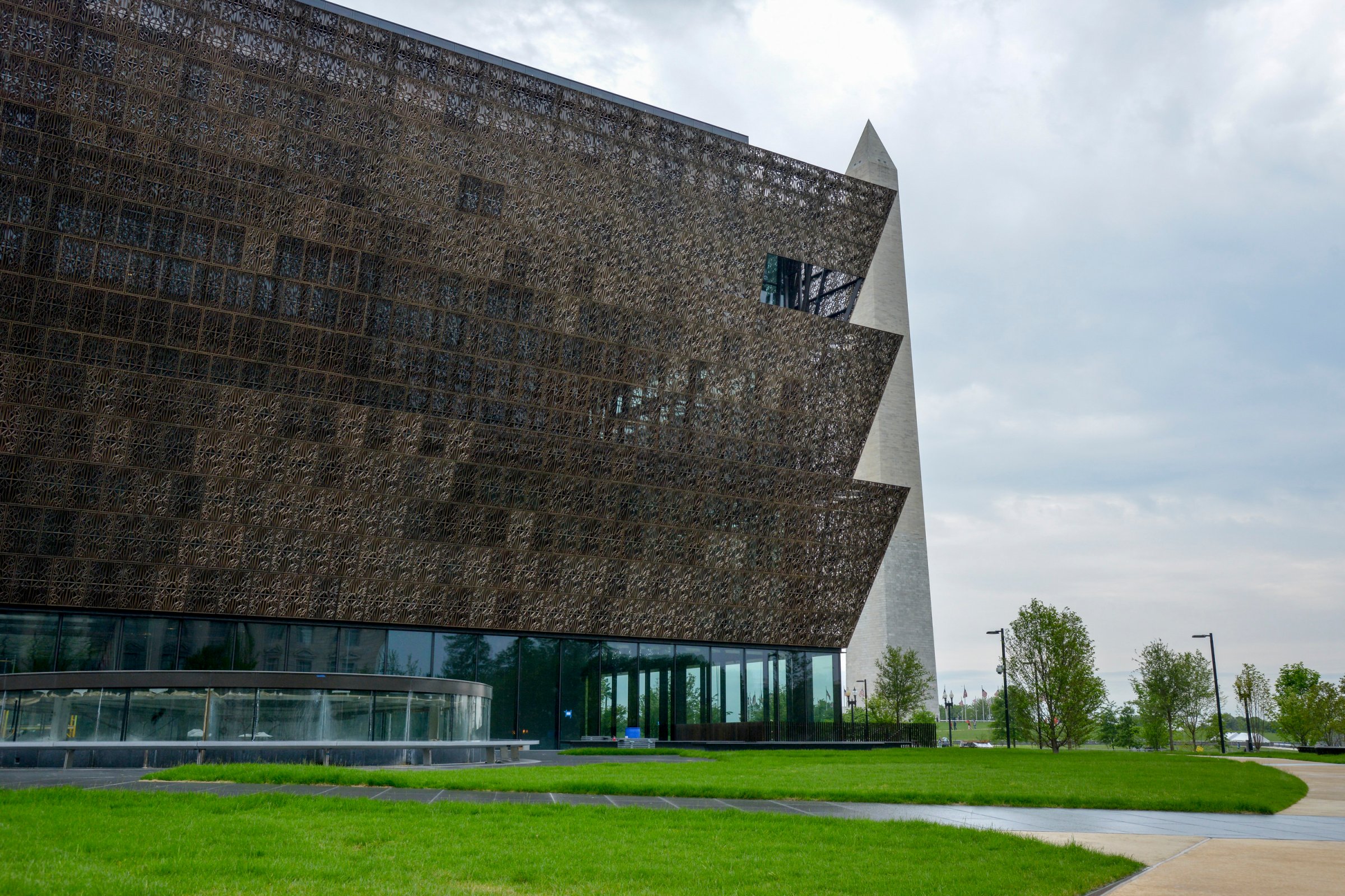
On the lowest level of the National Museum of African American History and Culture, set to open this September, there is a series of inscriptions on a sprawling far wall. It’s known as the Founding Wall, meant to introduce visitors to the major themes that inform the space: freedom, democracy, and America’s uphill journey to ensure both for all of its citizens.
The quotes will usher visitors along in a very deliberate way; starting with the Declaration of Independence and ending with a quote by journalist and civil rights activist Ida B. Wells. “The way to right wrongs is to turn the light of truth upon them.”
In a way the museum itself, a building a decade in the making that has been a hope for many for nearly 100 years, is hoping to be that light. For proof, look no further than the architecture. About 60% of the building is below ground level, but every level has access to natural light. An skylight allows visitors on the underground floor to get a glimpse of what’s above. Floor-to-ceiling windows wrap the buildings ground floor, offering a panoramic view of the National Mall.
The top floor rests at the center of the building’s “corona,” the three-tiered metal outer layer that puts a modern twist on southern ironwork. There, massive windows partially covered by the metalwork offer a full view of some of Washington’s most noteworthy buildings and monuments. Visitors have to look through the building’s frame in order to see the rest of Washington.
“This museum will reveal American history through the lens of the African-American experience. That’s literally and figuratively” said Philip Freelon, a lead architect on the project.
On Thursday, the Smithsonian Institution opened its doors to a smattering of journalists, including TIME, for a sneak peek at the space. The museum is steps away from the Washington Monument, the towering obelisk built in commemoration of the nation’s first president, who also owned slaves. That dichotomy is not lost in the museum, especially not on the subterranean floor where the tour began.
The building is half-empty now, with hanging wires, dust, empty display cases and wooden crates where artifacts will soon rest. There are 11 historical galleries in the building, an auditorium named after Oprah Winfrey, a cafeteria, and a series of cultural galleries on the top floor.
Nearly every major artifact the building is set to house has a story. Take, for instance, the slave cabin nestled beneath a quote by Harriet Tubman on the ground floor. The wooden structure was donated by the descendants of slaves living on Edisto Island, South Carolina. It is said to have been built circa the 1850s; it was occupied until the 1980s. Up a ramp and to the left sits a segregated train car around which the entire structure was built. A rare plane that was used to train Tuskegee Airmen was unearthed by an Air Force pilot who merely wanted to own an open-cockpit biplane. When he submitted the serial number of a wreck he purchaed to the Air Force archives, they told him he’d discovered the first plane Tuskegee Airmen had learned to fly on.
Chuck Berry’s Cadillac and George Clinton’s P-Funk Mothership are on the top floor of the building, which focuses on the cultural contributions of African-Americans. As Dwan Reece, a music and performing arts curator, told reporters on Thursday, “the historical galleries are the foundation, but culture is always embedded in that history.”
The museum is designed to offer visitors an opportunity to engage with the history in a fluid way, explained Zena Howard, the senior project manager on the project. A segregated rail car is positioned directly above a slave cabin; visitors can lean over a balcony and see through the wooden window frame. A cabin built by former slaves in Maryland is a stones-throw away from the Tuskegee Airmen plane. And a gallery of picket signs that grapple with the period between the civil rights movement and the election of the U.S.’s first black president is nestled near the top of the entire space. On every floor there are rooms designed specifically for reflection and contemplation—the designers want the heaviness of the historical galleries to sit with visitors and therefore they wanted to offer an opportunity for guests to discuss what they’ve seen with family and friends.
“Some of these stories are difficult. You think about Trayvon Martin and all of these things that are going on, we could be back in the ’50s again,” Freelon said. “We want folks to be able to sit for a while and just think.”
Though the museum focuses on African-Americans’ contributions to the United States, curators hope all visitors can see themselves in the exhibits, especially the first exhibit visitors will encounter.
“This is an American story told through an African American experience,” Mary N. Elliott, a museum specialist at the National Museum of African American History and Culture, said on the tour. “Regardless of your race, you will see yourself in this story.”
More Must-Reads from TIME
- Donald Trump Is TIME's 2024 Person of the Year
- Why We Chose Trump as Person of the Year
- Is Intermittent Fasting Good or Bad for You?
- The 100 Must-Read Books of 2024
- The 20 Best Christmas TV Episodes
- Column: If Optimism Feels Ridiculous Now, Try Hope
- The Future of Climate Action Is Trade Policy
- Merle Bombardieri Is Helping People Make the Baby Decision
Contact us at letters@time.com